Building a Successful SAAS Business from Scratch
Table of Contents
Introduction
Starting a SaaS business from scratch is exciting yet challenging. In a digital age where businesses are more dependent on technology solutions, the potential for success in SaaS is big. This guide will take you through a complete blueprint on how to create an SaaS business from the ground up.
The SaaS model presents businesses with the solution of accessing software applications over the internet instead of making conventional installations. This shift has is responsible for the manner in which organizations approach software solutions and this resulted as an opportunity to entrepreneurs in order to answer specific needs of a particular market with innovative products.
1. Identify a Niche and Validate the Idea for your SAAS
Identifying a niche and validating your SaaS idea is a critical first step in building a successful business. Here’s a detailed guide on how to go about it:
1. Market Research:
- Define Your Interests and Expertise: Start by exploring areas where you have expertise or a genuine interest. Understanding the industry will give you an advantage.
- Trends and Emerging Technologies: Look for emerging trends, technologies, or pain points within your chosen industry. Consider the potential impact on businesses.
2. Problem Identification:
- User Pain Points: Identify specific challenges or pain points that businesses or individuals within the niche are facing. This could be through interviews, surveys, or by studying industry reports.
- Gaps in Existing Solutions: Analyze the current solutions available in the market. Identify any gaps or shortcomings that your SaaS product could address more effectively.
3. Target Audience:
- Define Your Ideal Customer: Clearly define your target audience. Understand their demographics, behavior, and preferences.
- Segmentation: If the niche is broad, consider segmenting your audience based on different needs or characteristics.
4. Competitor Analysis:
- Identify Competitors: List down existing SaaS solutions in your chosen niche. Analyze their features, pricing, and customer reviews.
- Unique Selling Proposition (USP): Determine how your product can stand out. What unique value can you provide that competitors don’t?
5. Validate the Idea:
- Surveys and Questionnaires: Create surveys or questionnaires to gather feedback from your target audience. Ask about their pain points, willingness to adopt a solution, and what features they find most valuable.
- Prototypes or Mockups: Develop basic prototypes or mockups of your SaaS product to give potential users a visual representation. Gather feedback on the concept.
- Landing Page and Sign-up: Create a landing page describing your SaaS product. Include a sign-up form to gauge interest and collect email addresses of potential users.
6. Networking and Expert Consultation:
- Connect with Industry Experts: Attend industry events, webinars, and engage with professionals in your chosen niche. Seek their opinions on the viability of your idea.
- Mentorship: Consider seeking mentorship from individuals experienced in SaaS or your specific industry.
7. Financial Feasibility:
- Cost Analysis: Evaluate the potential costs associated with developing and maintaining your SaaS product. Consider scalability and ongoing expenses.
- Revenue Projections: Estimate potential revenue based on your pricing model and the size of your target market.
8. Iterate Based on Feedback:
- Adaptability: Be open to adapting your idea based on the feedback received. Iterative improvement is crucial for success.
- Pilot Programs: Consider running small-scale pilot programs to test your solution in a real-world environment.
9. Decision-Making:
- Go/No-Go Decision: Based on the gathered feedback and analysis, make an informed decision on whether to proceed with the idea or pivot to a more viable concept.
- Refinement: If proceeding, refine your idea based on the insights gained during the validation process.
By thoroughly researching, identifying problems, and validating your idea, you lay a solid foundation for the development of a SaaS product that addresses real needs in the market. This process helps mitigate risks and increases the likelihood of building a solution that resonates with your target audience.
2. Develop a Minimum Viable Product (MVP)
Developing an MVP is essential in establishing a SaaS company. Thanks to the MVP, you can quickly and cheaply verify your central idea, get user feedback on it and make any necessary changes in a product. The following is a step-by-step strategy to creating a profitable MVP:
1. Define Core Features:
- Identify Key Functionality: Determine the essential features that directly address the primary problem identified during the validation phase.
- Prioritize Features: Focus on features that provide the most value to users and align with your unique selling proposition.
2. Keep it Simple:
- Simplicity is Key: Avoid feature bloat in the initial version. The goal is to provide a solution to the identified problem with the minimum necessary features.
- User Experience: Prioritize a clean and intuitive user interface to enhance user experience.
3. Choose the Right Technology Stack:
- Scalability: Select a technology stack that can support future scalability while ensuring the MVP’s quick and efficient development.
- Cost-Effective Solutions: Consider cost-effective technologies, especially in the early stages.
4. Develop a Prototype:
- Wireframes and Mockups: Create wireframes or mockups to visualize the user interface and flow of your SaaS product.
- Clickable Prototype: If possible, develop a clickable prototype to give potential users a hands-on experience of the product flow.
5. Agile Development:
- Adopt Agile Methodology: Utilize an agile development approach, breaking the development process into manageable sprints.
- Iterative Development: Regularly release updates and improvements based on user feedback.
6. Focus on Core Functionality:
- Core Problem Solving: Ensure that the MVP effectively addresses the core problem identified during the validation phase.
- User Feedback Integration: Be open to modifying features based on initial user feedback.
7. Implement Analytics:
- User Tracking: Integrate analytics tools to track user behavior within the MVP.
- Key Metrics: Monitor key performance indicators (KPIs) such as user engagement, conversion rates, and feature usage.
8. Conduct Beta Testing:
- Limited User Group: Invite a small group of users or a closed beta group to test the MVP.
- Feedback Gathering: Encourage users to provide feedback on their experience, paying attention to pain points and suggestions.
9. Iterate and Improve:
- Feedback Analysis: Analyze user feedback and identify areas for improvement.
- Iterative Development: Implement changes and iterate on the MVP to enhance functionality and user satisfaction.
10. Prepare for Scalability:
- Scalability Assessment: Assess the MVP’s architecture to ensure it can scale smoothly as user numbers grow.
- Infrastructure Planning: Plan for infrastructure scalability to accommodate increased demand.
11. Maintain Security:
- Data Protection: Prioritize data security and privacy in the MVP.
- Compliance: Ensure that your product complies with relevant data protection regulations.
12. Deployment and Monitoring:
- Launch: Deploy your MVP to a broader audience.
- Monitoring and Bug Fixes: Continuously monitor the system for issues, promptly addressing any bugs or glitches.
13. Gather User Testimonials:
- Collect Testimonials: Request testimonials from users who found value in your MVP.
- Build Credibility: Use positive testimonials to build credibility when marketing your SaaS product.
Developing an MVP is a dynamic process that involves continuous learning and adaptation. By focusing on core functionality, gathering user feedback, and iterating based on insights gained, you set the stage for a more refined and market-ready SaaS product.
3. Build a Strong Team
Your SaaS firm needs a solid and well-coordinated workforce to succeed. Each team member plays an important role in the product process creation, marketing and sales growth. Here’s how to assemble a capable staff for your SaaS startup:
1. Define Roles and Responsibilities:
- Clearly define the roles and responsibilities needed for your SaaS business.
- Identify key areas such as development, design, marketing, sales, customer support, and operations.
2. Technical Team:
- CTO/Lead Developer: Hire an experienced Chief Technology Officer or lead developer to oversee the technical aspects of your SaaS product.
- Developers: Assemble a team of skilled developers with expertise in relevant technologies.
- Quality Assurance (QA): Include QA professionals to ensure the quality and reliability of your software.
3. Design Team:
- UI/UX Designers: Employ designers who can create a user-friendly and visually appealing interface.
- Graphic Designers: If needed, hire graphic designers for branding and marketing materials.
4. Sales and Marketing:
- Chief Marketing Officer (CMO): Bring in a CMO or experienced marketing leader to strategize and execute marketing campaigns.
- Sales Team: Build a sales team to drive user acquisition, retention, and revenue growth.
- Content Marketers: Employ content marketers to create informative content that showcases your product’s value.
5. Customer Support:
- Customer Support Representatives: Provide excellent customer support with a team that understands your product and can address user inquiries promptly.
- Community Managers: If applicable, hire community managers to engage with users on social media and forums.
6. Operations:
- Operations Manager: Have someone responsible for the day-to-day operations and coordination between different teams.
- Finance and Administration: Hire professionals to manage financial aspects, budgeting, and administrative tasks.
7. Cultural Fit:
- Company Culture: Foster a positive company culture that aligns with your values and mission.
- Team Collaboration: Encourage open communication and collaboration among team members.
8. Remote Work Considerations:
- Remote Team Management: If your team is remote, implement effective communication tools and practices.
- Team Building Activities: Conduct virtual team-building activities to enhance cohesion.
9. Recruitment Process:
- Clearly Defined Criteria: Clearly define the skills and attributes you’re looking for in each role.
- Interview Process: Conduct thorough interviews to assess both technical skills and cultural fit.
10. Continuous Learning and Development:
- Training Programs: Implement ongoing training programs to keep the team updated on industry trends and technologies.
- Skill Development: Encourage team members to develop new skills that align with their roles.
11. Diversity and Inclusion:
- Diverse Team: Aim for diversity in your team to bring in varied perspectives.
- Inclusive Environment: Create an inclusive work environment where all team members feel valued.
12. Performance Evaluation and Recognition:
- Regular Reviews: Conduct regular performance reviews to provide feedback and set goals.
- Recognition Programs: Implement recognition programs to acknowledge and reward outstanding contributions.
13. Team Retreats and Events:
- Team Building Retreats: Plan occasional team retreats or events to strengthen bonds and enhance teamwork.
- Celebrate Milestones: Celebrate key milestones and achievements as a team.
Building a strong team is an ongoing process that requires careful planning, effective communication, and a commitment to fostering a positive and collaborative work environment. A united and skilled team is key to overcoming challenges and driving the success of your SaaS business.
4. Develop a Robust Business Model
Creating a solid business plan is essential to starting a profitable SaaS company. Your product’s development, delivery, and value-capture processes are described in your business model. This thorough guide will assist you in creating a compelling business plan for your SaaS startup:
1. Understand Your Value Proposition:
- Clearly define the unique value your SaaS product offers to customers.
- Identify the key problems your product solves and the benefits it provides.
2. Choose a Suitable Pricing Model:
- Subscription Pricing: Charge users on a recurring basis, such as monthly or annually.
- Freemium Model: Offer a free version with limited features and premium plans with additional functionalities.
- Usage-Based Pricing: Charge based on the level of usage or specific features utilized.
3. Define Pricing Tiers:
- Tiered Plans: Create different pricing tiers to cater to various customer segments.
- Feature Differentiation: Differentiate plans based on features, scalability, or support levels.
4. Free Trial or Freemium Options:
- Free Trial Period: Provide a limited-time free trial to allow users to experience your product.
- Freemium Model: Offer a free version with basic features and encourage users to upgrade for more advanced capabilities.
5. Flexible Billing and Payment Options:
- Billing Flexibility: Allow users to choose between monthly and annual billing options.
- Payment Methods: Provide multiple payment methods for user convenience.
6. Customer Acquisition Strategy:
- Content Marketing: Develop valuable content that educates and attracts potential users.
- Social Media and Advertising: Utilize social media platforms and targeted advertising to reach your audience.
- Referral Programs: Implement referral programs to incentivize existing users to bring in new customers.
7. Customer Retention:
- Customer Onboarding: Create a smooth onboarding process to help users get started quickly.
- Regular Updates: Continuously improve and update your product based on user feedback.
- Customer Support: Offer excellent customer support to address issues promptly.
8. Monitor Key Metrics:
- Customer Acquisition Cost (CAC): Calculate the cost of acquiring each customer.
- Customer Lifetime Value (LTV): Estimate the total revenue a customer is expected to generate over their lifetime.
- Churn Rate: Monitor the rate at which customers cancel or stop using your service.
9. Legal and Compliance Considerations:
- Data Protection: Prioritize data security and comply with relevant data protection regulations.
- Terms of Service and Privacy Policy: Clearly outline terms of service and privacy policies for users.
10. Upselling and Cross-Selling Strategies:
- Upgrade Paths: Design plans with clear upgrade paths to encourage users to move to higher tiers.
- Cross-Selling: Identify opportunities to cross-sell additional products or features.
11. Strategic Partnerships:
- Partnership Opportunities: Explore collaborations with other businesses or platforms to expand your reach.
- Integration Partnerships: Integrate with complementary services to enhance your product’s value.
12. Continuous Market Analysis:
- Competitor Analysis: Regularly assess the competitive landscape to stay informed about market trends.
- Market Expansion: Explore opportunities for expanding into new markets or industries.
13. Financial Planning:
- Budgeting: Develop a comprehensive budget covering development, marketing, and operational expenses.
- Investment Opportunities: Explore funding options if needed, such as seeking venture capital or angel investors.
14. Feedback Loops:
- Customer Feedback: Establish mechanisms for gathering and acting on customer feedback.
- Iterative Improvement: Use feedback to iteratively improve your product and business model.
A robust business model is flexible, adaptable, and aligned with the evolving needs of your customers and the market. Regularly reassess and refine your business model as your SaaS business grows and as you gather more insights from user interactions and market dynamics.
5. Create an Effective Go-to-Market Strategy
Crafting a successful go-to-market (GTM) strategy holds paramount importance in the successful launch of your SaaS product. An intricately designed GTM plan is instrumental in reaching your intended audience, establishing brand recognition, and facilitating customer acquisition. The following is a stepwise guide to formulating a potent go-to-market strategy:
1. Define Your Target Audience:
- Buyer Personas: Clearly define your ideal customers with detailed buyer personas.
- Segmentation: Identify and segment your target audience based on demographics, behavior, and needs.
2. Understand Market Trends and Competition:
- Market Analysis: Stay informed about market trends, emerging technologies, and shifts in customer behavior.
- Competitive Landscape: Analyze your competitors to identify strengths, weaknesses, opportunities, and threats.
3. Craft a Compelling Value Proposition:
- Unique Selling Proposition (USP): Clearly articulate what sets your SaaS product apart from competitors.
- Customer Benefits: Highlight the specific benefits and solutions your product offers to your target audience.
4. Create Marketing Collateral:
- Website: Develop a user-friendly and informative website that showcases your product features, benefits, and use cases.
- Branding: Design a consistent and visually appealing brand identity across all marketing collateral.
- Demo Videos and Tutorials: Create engaging demo videos and tutorials to demonstrate how your SaaS product works.
5. Content Marketing:
- Blog Posts: Publish regular blog posts addressing industry challenges, trends, and providing valuable insights.
- Whitepapers and eBooks: Offer in-depth content that positions your company as an authority in your niche.
- Webinars and Podcasts: Host webinars and podcasts to engage your audience and showcase your expertise.
6. Social Media Engagement:
- Platform Selection: Choose the social media platforms most relevant to your target audience.
- Content Sharing: Share valuable content, engage with your audience, and build a community around your brand.
7. Search Engine Optimization (SEO):
- Keyword Research: Optimize your website and content for relevant keywords in your industry.
- Backlink Building: Build a strong backlink profile to improve your website’s authority.
8. Email Marketing:
- Segmentation: Segment your email list to deliver targeted and personalized content.
- Drip Campaigns: Implement drip campaigns to nurture leads and guide them through the customer journey.
9. Influencer Marketing:
- Identify Influencers: Identify influencers or thought leaders in your industry.
- Partnerships: Collaborate with influencers for product reviews, endorsements, or joint content creation.
10. Paid Advertising:
- Google Ads: Use Google Ads to target specific keywords and reach potential customers.
- Social Media Ads: Invest in targeted advertising on platforms like Facebook, LinkedIn, or Twitter.
11. Launch Campaign:
- Launch Event: Host a launch event or webinar to introduce your SaaS product to the market.
- Promotions and Discounts: Offer limited-time promotions or discounts to incentivize early adoption.
12. Networking and Industry Events:
- Participate in Events: Attend industry conferences, webinars, and networking events.
- Sponsorship: Consider sponsoring relevant events to enhance your brand visibility.
13. Customer Feedback and Refinement:
- Feedback Loops: Establish channels for gathering customer feedback.
- Continuous Improvement: Use feedback to iterate on your marketing strategies and product positioning.
14. Sales Enablement:
- Training: Train your sales team on the product features, benefits, and objection handling.
- Sales Collateral: Provide sales teams with effective collateral to aid their conversations with potential customers.
15. Metrics and Analytics:
- Key Performance Indicators (KPIs): Monitor KPIs such as website traffic, conversion rates, and customer acquisition cost.
- User Analytics: Understand how users are interacting with your product and marketing channels.
16. Post-Launch Support:
- Customer Onboarding: Ensure a smooth onboarding process for new customers.
- Customer Support: Provide responsive customer support to address queries and issues.
17. Feedback and Adaptation:
- Iterative Approach: Continuously adapt your go-to-market strategy based on the feedback and performance metrics.
- Market Changes: Stay flexible and responsive to changes in the market landscape.
18. Global Expansion:
- Internationalization: If applicable, plan for global expansion and tailor your marketing strategies for different markets.
- Localization: Consider adapting content and messaging to suit local languages and cultures.
A successful go-to-market strategy is a dynamic plan that evolves with your business. Regularly assess its effectiveness, incorporate lessons learned, and adjust your approach to stay competitive and effectively reach your target audience.
6. Focus on Customer Retention
Fostering customer loyalty stands as a crucial factor in building a successful SaaS business. The continued retention of existing customers not only ensures a steady revenue stream but also nurtures brand advocacy and positive referrals. This guide offers a comprehensive walkthrough on prioritizing customer retention:
1. Provide Excellent Onboarding:
- Smooth Onboarding Process: Ensure that the initial experience for new users is smooth and intuitive.
- Guided Tours and Tutorials: Offer guided tours and tutorials to help users understand the key features and functionalities.
2. Regularly Communicate Value:
- Educational Content: Share educational content, webinars, or newsletters to highlight new features and best practices.
- Product Updates: Keep customers informed about product updates, enhancements, and improvements.
3. Build Strong Customer Relationships:
- Personalized Communication: Personalize communication based on user behavior and preferences.
- Customer Feedback: Encourage and respond to customer feedback to show that their opinions are valued.
4. Offer Exceptional Customer Support:
- Responsive Support: Provide prompt and responsive customer support through various channels (email, chat, or phone).
- Knowledge Base: Develop a comprehensive knowledge base to empower users to find answers independently.
5. Implement a Customer Loyalty Program:
- Reward Programs: Introduce loyalty programs with rewards for long-term customers.
- Exclusive Access: Provide exclusive access to new features or content for loyal customers.
6. Monitor Customer Health:
- Usage Analytics: Monitor how customers are using your product through analytics.
- Identify Red Flags: Identify signs of reduced engagement or potential dissatisfaction.
7. Proactive Issue Resolution:
- Anticipate Problems: Proactively identify and address potential issues before they become major problems.
- Customer Success Team: Establish a customer success team to actively engage with customers and ensure their success.
8. Regular Check-Ins:
- Customer Check-Ins: Conduct regular check-ins to assess customer satisfaction and gather feedback.
- Account Reviews: Periodically review customer accounts to identify areas for improvement.
9. Community Building:
- User Forums and Communities: Create online forums or communities where users can share experiences and tips.
- User Events: Host events, webinars, or meetups to connect with your user community.
10. Flexible Billing and Upgrade Paths:
- Flexible Plans: Offer flexible plans that can scale with the evolving needs of your customers.
- Upgrade Paths: Clearly communicate the benefits of upgrading and provide easy pathways to do so.
11. Renewal Reminders:
- Subscription Renewal Notifications: Send timely reminders for subscription renewals.
- Incentives for Renewals: Offer special incentives or discounts for customers who renew their subscriptions.
12. Customer Feedback Loops:
- Feedback Mechanisms: Establish ongoing mechanisms for gathering customer feedback.
- Act on Feedback: Act on feedback to make improvements and demonstrate your commitment to customer satisfaction.
13. Customer Retention Metrics:
- Churn Rate: Monitor and analyze your churn rate regularly.
- Net Promoter Score (NPS): Use NPS surveys to gauge overall customer satisfaction and loyalty.
14. Customer Advocacy Programs:
- Referral Programs: Implement referral programs where satisfied customers can refer new clients.
- Case Studies and Testimonials: Showcase success stories through case studies and testimonials.
15. Regular Product Training:
- Training Sessions: Conduct regular training sessions to keep customers updated on new features.
- Resource Libraries: Maintain a library of resources for ongoing learning.
16. Surprise and Delight Initiatives:
- Surprise Offers: Occasionally surprise customers with special offers or exclusive content.
- Anniversary Recognition: Recognize and celebrate customer anniversaries with your product.
17. Adapt to Customer Needs:
- Iterative Development: Continuously improve your product based on customer feedback and evolving industry needs.
- Customization Options: Provide customization options to meet the specific needs of different customers.
18. Feedback Implementation:
- Iterate Based on Feedback: Actively implement changes and improvements based on customer feedback.
- Closed Feedback Loop: Communicate to customers how their feedback has led to positive changes in the product.
19. Competitive Pricing Strategies:
- Discounts for Long-Term Commitments: Offer discounts for customers who commit to long-term contracts.
- Value-Based Pricing: Align pricing with the value your product delivers to customers.
Focusing on customer retention involves a combination of excellent product quality, ongoing communication, and a commitment to understanding and meeting customer needs. By adopting these strategies, you can build a loyal customer base that not only continues to use your SaaS product but becomes a source of advocacy and referrals.
7. Ensure Data Security and Compliance
Securing data and ensuring compliance are of utmost importance for any SaaS business, particularly when handling sensitive user information. An effective strategy for data protection not only protects your customers but also plays a key role in establishing trust and credibility. This guide outlines the steps to guarantee data security and compliance for your SaaS business:
1. Understand Data Protection Regulations:
- Research Applicable Laws: Familiarize yourself with data protection regulations that apply to your target markets (e.g., GDPR in Europe, CCPA in California, etc.).
- Stay Informed: Regularly monitor updates and changes to privacy laws to ensure ongoing compliance.
2. Implement Secure Data Storage:
- Encryption: Encrypt sensitive data both in transit and at rest using strong encryption algorithms.
- Secure Storage Solutions: Choose reputable and secure cloud storage providers with a proven track record in data protection.
3. User Authentication and Authorization:
- Multi-Factor Authentication (MFA): Implement MFA to add an extra layer of security for user accounts.
- Role-Based Access Control (RBAC): Limit access to data based on job roles to reduce the risk of unauthorized access.
4. Regular Security Audits and Assessments:
- Internal Audits: Conduct regular internal security audits to identify vulnerabilities.
- Third-Party Audits: Engage third-party security experts to perform penetration testing and assessments.
5. Data Minimization and Purpose Limitation:
- Collect Minimum Necessary Data: Only collect data that is necessary for the intended purpose.
- Define Data Usage Purposes: Clearly communicate to users how their data will be used and adhere to those purposes.
6. Privacy by Design:
- Incorporate Privacy Early: Integrate privacy considerations into the development process from the outset.
- Data Impact Assessments: Conduct Data Protection Impact Assessments (DPIAs) for new features or significant changes.
7. Data Breach Response Plan:
- Develop a Response Plan: Have a well-defined plan in place to respond to a data breach.
- Communication Strategy: Outline how you will communicate with affected parties and relevant authorities in case of a breach.
8. User Consent Management:
- Clear Consent Process: Clearly communicate data usage and obtain explicit consent from users.
- Consent Records: Maintain records of user consent to demonstrate compliance.
9. Vendor Security Assessment:
- Third-Party Vendors: Assess the security practices of third-party vendors and service providers.
- Contracts and Agreements: Clearly define security responsibilities in contracts and agreements with vendors.
10. Employee Training and Awareness:
- Security Training: Provide regular security training to employees to raise awareness of data protection best practices.
- Incident Response Training: Ensure employees are trained on the proper response to security incidents.
11. Regular Security Updates:
- Patch Management: Keep software, applications, and systems up-to-date with the latest security patches.
- Vulnerability Scanning: Conduct regular vulnerability scans to identify and address potential weaknesses.
12. Legal and Compliance Documentation:
- Privacy Policies: Maintain clear and comprehensive privacy policies accessible to users.
- Documentation Records: Keep records of data processing activities and privacy compliance documentation.
13. Secure Transmission Protocols:
- SSL/TLS Encryption: Use secure transmission protocols for data exchanged between servers and clients.
- HTTPS Implementation: Enforce the use of HTTPS to secure communication over the web.
14. Incident Response Team:
- Form an Incident Response Team: Establish a team dedicated to responding promptly and effectively to security incidents.
- Regular Drills: Conduct regular incident response drills to ensure the team is well-prepared.
15. International Data Transfers:
- Standard Contractual Clauses (SCCs): If transferring data internationally, ensure compliance with data transfer mechanisms such as SCCs.
- Binding Corporate Rules (BCRs): Explore BCRs for intra-organizational data transfers.
16. Continuous Monitoring and Improvement:
- Security Metrics: Establish and monitor key security metrics to gauge the effectiveness of your security measures.
- Continuous Improvement: Continuously update and enhance security practices based on evolving threats and technology.
17. Legal Consultation:
- Data Protection Officer (DPO): Appoint a Data Protection Officer if required by applicable regulations.
- Legal Counsel: Consult legal experts specializing in data protection to ensure compliance.
18. Data Retention Policies:
- Define Clear Retention Periods: Establish clear policies for the retention and deletion of user data.
- Regular Audits: Conduct regular audits to ensure compliance with data retention policies.
19. Anonymous Data Aggregation:
- Aggregate Anonymous Data: Whenever possible, aggregate and anonymize data to reduce the risk associated with individual user information.
20. Secure Development Practices:
- Security Coding Standards: Enforce secure coding practices during the development process.
- Regular Code Reviews: Conduct regular code reviews with a focus on security.
21. Legal Updates Compliance:
- Stay Updated: Keep abreast of legal updates and changes to privacy regulations to promptly adapt your practices.
- Legal Compliance Team: Have a dedicated team or personnel responsible for monitoring legal changes and ensuring compliance.
Ensuring data security and compliance is an ongoing commitment that requires vigilance, adaptation, and a dedication to maintaining the highest standards of user protection. Regularly review and update your security measures in response to emerging threats and changes in the regulatory landscape.
8. Monitor Metrics and Analytics
Understanding the performance and effectiveness of your SaaS business is achieved through monitoring metrics and analytics. By tracking key performance indicators KPIs, you will be able to make informed decisions on different approaches in their decision making and identify areas that need improvement as well as the success of your strategies. Here’s a guide to help you monitor metrics and analytics effectively:
1. User Acquisition Metrics:
- Website Traffic: Monitor the number of visitors to your website.
- Conversion Rate: Track the percentage of website visitors who become registered users or customers.
- Cost per Acquisition (CPA): Calculate the cost of acquiring each new customer through marketing efforts.
2. User Engagement Metrics:
- Active Users: Track the number of active users over a specific period.
- Session Duration: Measure the average time users spend interacting with your SaaS product.
- Feature Usage: Monitor the usage of key features to identify popular functionalities.
3. Customer Retention Metrics:
- Churn Rate: Measure the rate at which customers cancel or stop using your service.
- Customer Lifetime Value (LTV): Estimate the total revenue a customer is expected to generate over their lifetime.
- Net Promoter Score (NPS): Gauge overall customer satisfaction and loyalty.
4. Financial Metrics:
- Monthly Recurring Revenue (MRR): Track the total revenue generated from subscription fees on a monthly basis.
- Annual Recurring Revenue (ARR): Calculate the yearly total of recurring revenue.
- Profit Margins: Monitor the profitability of your SaaS business.
5. Conversion Funnel Metrics:
- Conversion Rate by Stage: Analyze the conversion rates at different stages of your sales funnel.
- Drop-off Points: Identify and address areas where users drop out of the conversion process.
6. Customer Support Metrics:
- Ticket Resolution Time: Measure the time taken to resolve customer support tickets.
- Customer Satisfaction (CSAT): Collect feedback to assess customer satisfaction with your support services.
- First Response Time: Monitor the time it takes to respond to customer inquiries.
7. Product Usage Metrics:
- Feature Adoption Rates: Track how quickly users adopt new features.
- User Paths: Analyze the user journey within your product to identify common paths and potential bottlenecks.
- Error Rates: Monitor the occurrence of errors or bugs within your SaaS product.
8. Security and Compliance Metrics:
- Security Incidents: Track the number and nature of security incidents.
- Compliance Checklists: Regularly assess your compliance with relevant data protection regulations.
- Data Access Logs: Monitor and audit access to sensitive data.
9. Social Media Metrics:
- Social Engagement: Measure likes, shares, and comments on social media platforms.
- Conversion from Social Media: Track the number of users who convert from social media referrals.
- Audience Growth: Monitor the growth of your social media audience.
10. Technical Infrastructure Metrics:
- Uptime and Downtime: Measure the availability of your SaaS product.
- Server Response Time: Monitor the time it takes for servers to respond to user requests.
- Scalability: Assess the performance of your infrastructure under different usage levels.
11. Mobile App Metrics:
- App Downloads: Track the number of downloads for your mobile app.
- User Ratings and Reviews: Monitor user ratings and reviews on app stores.
- In-App Events: Track specific in-app events and user interactions.
12. Email Marketing Metrics:
- Open Rates: Measure the percentage of email recipients who open your emails.
- Click-Through Rates (CTR): Track the percentage of users who click on links within your emails.
- Conversion Rates: Measure how many email recipients take the desired action.
13. Feedback and Survey Metrics:
- Survey Response Rates: Track the percentage of users who respond to feedback surveys.
- Sentiment Analysis: Analyze the sentiment of user feedback to identify positive and negative sentiments.
- Actionable Insights: Use feedback metrics to drive improvements in your product and services.
14. Geographic and Demographic Metrics:
- User Locations: Analyze the geographical distribution of your user base.
- Demographic Information: Gather and analyze demographic data to tailor marketing efforts.
15. Experimentation Metrics:
- A/B Testing Results: Evaluate the performance of different variations through A/B testing.
- Conversion Lift: Measure the increase in conversions resulting from experimental changes.
- Statistical Significance: Ensure that test results are statistically significant before making decisions.
16. Data Privacy Metrics:
- User Consent Rates: Track the percentage of users who provide consent for data processing.
- Data Subject Requests: Monitor the number and response time for data subject access requests.
- Data Security Incidents: Track incidents related to data security and privacy.
17. Compliance Training Metrics:
- Training Completion Rates: Measure the percentage of employees who complete data protection and compliance training.
- Knowledge Assessment Results: Assess the effectiveness of compliance training through knowledge assessments.
18. Accessibility Metrics:
- Accessibility Compliance: Ensure your SaaS product complies with accessibility standards (e.g., WCAG).
- User Accessibility Feedback: Gather user feedback on the accessibility of your product.
19. Environmental Sustainability Metrics:
- Carbon Footprint: Measure the environmental impact of your data centers and operations.
- Sustainable Practices: Implement and monitor environmentally sustainable practices.
20. Legal Compliance Metrics:
- Audit Trail: Maintain an audit trail to demonstrate compliance with legal and regulatory requirements.
- Regulatory Changes: Monitor legal changes and assess their impact on your SaaS business.
Best Practices for Monitoring Metrics:
- Establish Clear Goals: Define specific goals and objectives for each metric you track.
- Regular Reporting: Generate regular reports to keep stakeholders informed.
- Benchmarking: Compare your metrics against industry benchmarks and competitors.
- Feedback Loop: Use metrics to drive continuous improvement and inform strategic decisions.
By regularly monitoring these metrics, your SaaS business can adapt to changing circumstances, identify growth opportunities, and maintain a competitive edge in the market. Adjust your strategies based on the insights gained from the data, and prioritize continuous optimization across various aspects of your business.
9. Scale and Expand
Scaling and expanding a SaaS business requires a strategic approach to accommodate growth while maintaining a high level of service and value for customers. Here’s a comprehensive guide on how to scale and expand your SaaS business effectively:
1. Evaluate Market Opportunities:
- Market Research: Conduct thorough market research to identify new opportunities and potential customer segments.
- Competitor Analysis: Assess competitors’ strategies and market positioning for insights.
2. Optimize Operations and Processes:
- Automation: Implement automation for routine tasks and processes to increase efficiency.
- Scalable Infrastructure: Ensure your technical infrastructure is scalable to handle increased demand.
3. Customer Feedback and Iteration:
- Feedback Loops: Continue gathering and acting on customer feedback to improve your product.
- Iterative Development: Implement iterative development to enhance features and address pain points.
4. Diversify Product Offerings:
- Feature Expansion: Add new features or modules to meet diverse customer needs.
- Product Bundling: Offer bundled packages or additional services to increase customer value.
5. International Expansion:
- Localization: Adapt your product and marketing strategies for international markets.
- Compliance: Ensure compliance with regulations in new regions.
6. Strategic Partnerships:
- Integration Partnerships: Form partnerships with complementary services or platforms to enhance your product’s value.
- Channel Partnerships: Collaborate with channel partners to extend your reach.
7. Invest in Marketing and Sales:
- Digital Marketing: Invest in targeted digital marketing strategies to reach a broader audience.
- Sales Team Expansion: Scale your sales team to accommodate increased leads and customers.
8. Scalable Customer Support:
- Self-Service Options: Develop self-service resources to empower customers to find solutions independently.
- Customer Support Team: Expand your customer support team to handle increased inquiries.
9. Data Security and Compliance:
- Maintain High Standards: Ensure data security and compliance remain a priority as you scale.
- Regular Audits: Conduct regular audits to verify ongoing compliance.
10. Invest in Talent:
- Recruitment: Hire additional team members with the skills necessary for scaling operations.
- Training Programs: Implement training programs to onboard new team members effectively.
11. Financial Planning:
- Budgeting: Develop a comprehensive budget considering increased operational costs.
- Revenue Forecasting: Create realistic revenue forecasts based on expected growth.
12. Customer Retention Strategies:
- Retention Programs: Enhance customer retention strategies to preserve your existing customer base.
- Feedback and Adaptation: Continuously adapt your product and services based on customer feedback.
13. Investment and Funding:
- Seek Funding: Explore funding options such as venture capital or angel investors.
- Return on Investment (ROI): Demonstrate a clear path to ROI for potential investors.
14. Performance Analytics and Monitoring:
- Real-Time Analytics: Implement real-time analytics to monitor performance and identify potential issues.
- Key Performance Indicators (KPIs): Define and track KPIs to measure the success of your scaling efforts.
15. User Training and Onboarding:
- Enhance Onboarding Processes: Optimize onboarding processes to accommodate a larger user base.
- Training Materials: Provide comprehensive training materials to support user learning.
16. Customer Communication Strategy:
- Transparency: Maintain transparency with existing customers about changes and improvements.
- Communication Channels: Utilize multiple communication channels to keep users informed.
17. Legal and Regulatory Compliance:
- Regulatory Analysis: Stay informed about changes in regulations that may affect your business.
- Legal Consultation: Seek legal advice to ensure compliance as you expand into new markets.
18. User Community Building:
- Community Forums: Foster an online community where users can share insights and best practices.
- User Events: Host virtual or in-person events to connect with your user community.
19. Environmental Sustainability:
- Sustainable Practices: Implement environmentally sustainable practices in your operations.
- Carbon Footprint Reduction: Explore ways to reduce your company’s carbon footprint.
20. Strategic Acquisitions:
- Acquisition Targets: Identify potential acquisition targets that align with your growth strategy.
- Due Diligence: Conduct thorough due diligence before pursuing acquisitions.
21. Adapt to Market Trends:
- Technology Trends: Stay abreast of evolving technology trends and integrate relevant innovations.
- User Behavior: Analyze changes in user behavior and adapt your strategies accordingly.
22. Customer Success Programs:
- Proactive Engagement: Implement proactive customer engagement programs to ensure user success.
- Personalization: Tailor customer success efforts based on individual customer needs.
23. Strategic Exit Planning:
- Exit Strategies: Develop clear exit strategies, whether through acquisition, IPO, or other means.
- Valuation: Regularly assess the valuation of your SaaS business for strategic decision-making.
24. Risk Management:
- Risk Assessment: Regularly assess potential risks associated with scaling and expansion.
- Risk Mitigation Strategies: Develop strategies to mitigate identified risks effectively.
Scaling and expanding a SaaS business is a dynamic and complex process that requires careful planning, strategic decision-making, and adaptability. Regularly reassess your growth strategies, monitor performance metrics, and be responsive to market changes to ensure sustained success in the long term.
10. Financial Management
A SaaS company’s capacity to succeed and endure depends on its ability to handle its finances effectively. To maximize financial performance, it entails financial planning, budgeting, cash flow monitoring, and strategic decision-making. This is a thorough guide on money management for your SaaS company:
1. Create a Detailed Budget:
- Revenue Projections: Develop realistic revenue projections based on historical data and market analysis.
- Expense Categories: Categorize and allocate funds to different expense categories, including development, marketing, sales, and operations.
- Contingency Planning: Include a contingency budget for unforeseen expenses.
2. Monitor Cash Flow:
- Cash Flow Statement: Regularly review and update your cash flow statement to understand the movement of money in and out of your business.
- Cash Flow Forecasting: Forecast future cash flows to anticipate potential shortages or surpluses.
3. Financial Reporting:
- Profit and Loss (P&L) Statement: Generate and analyze P&L statements to assess the profitability of your SaaS business.
- Balance Sheet: Maintain an updated balance sheet to understand your company’s financial position at a specific point in time.
- Cash Flow Statement: Track operating, investing, and financing activities to assess the sources and uses of cash.
4. Cost Control and Optimization:
- Expense Analysis: Regularly review expenses to identify areas for cost optimization.
- Vendor Negotiations: Negotiate with vendors and suppliers to secure favorable terms and pricing.
5. Revenue Model Optimization:
- Pricing Strategies: Continuously evaluate and optimize your pricing strategies based on market trends and customer feedback.
- Upselling and Cross-Selling: Implement strategies to upsell existing customers and cross-sell additional services.
6. Financial Forecasting:
- Long-Term Planning: Develop long-term financial forecasts to guide strategic decision-making.
- Scenario Analysis: Conduct scenario analyses to assess the impact of different market conditions on your financial performance.
7. Working Capital Management:
- Inventory Management: If applicable, optimize inventory levels to avoid excess or shortage.
- Accounts Receivable/Payable: Manage accounts receivable and payable efficiently to maintain healthy cash flow.
8. Investment and Financing Strategies:
- Capital Structure: Evaluate your capital structure and consider debt, equity, or a combination based on your growth plans.
- Investment Opportunities: Assess opportunities for strategic investments or partnerships.
9. Financial Compliance:
- Tax Planning: Develop a comprehensive tax strategy to optimize tax liabilities.
- Regulatory Compliance: Stay informed about financial regulations and ensure compliance with reporting requirements.
10. Risk Management:
- Risk Assessment: Identify and assess financial risks, including market risks, currency risks, and operational risks.
- Risk Mitigation Strategies: Develop strategies to mitigate identified risks and protect financial stability.
11. Financial Policies and Procedures:
- Documentation: Clearly document financial policies and procedures to ensure consistency and compliance.
- Internal Controls: Implement internal controls to safeguard financial assets and prevent fraud.
12. Investor Relations:
- Regular Reporting: Keep investors informed through regular financial reporting and updates.
- Communication: Maintain transparent and open communication with investors regarding financial performance and future plans.
13. Cost of Customer Acquisition (CAC) Analysis:
- CAC Calculation: Understand the cost of acquiring each customer and analyze its relationship with customer lifetime value.
- Marketing Efficiency: Evaluate the efficiency of marketing channels in terms of customer acquisition costs.
14. Financial Technology (FinTech) Integration:
- Automated Tools: Utilize FinTech tools for automated financial processes, reporting, and analytics.
- Payment Processing: Optimize payment processing systems for efficiency and cost-effectiveness.
15. Employee Financial Literacy:
- Training Programs: Implement financial literacy training programs for employees to enhance understanding of financial goals and metrics.
- Expense Responsibility: Foster a culture of responsibility for expenses among team members.
16. Benchmarking and Performance Metrics:
- Industry Benchmarks: Benchmark your financial performance against industry standards to identify areas for improvement.
- Key Performance Indicators (KPIs): Define and monitor financial KPIs to track the health of your SaaS business.
17. Exit Planning:
- Valuation Assessment: Regularly assess the valuation of your SaaS business.
- Exit Strategies: Develop clear exit strategies, considering options such as acquisition, IPO, or other exit mechanisms.
18. Sustainable Financial Practices:
- Environmental, Social, and Governance (ESG) Considerations: Integrate ESG considerations into financial decision-making.
- Sustainable Investments: Explore opportunities for sustainable investments and practices.
19. Financial Performance Metrics:
- Return on Investment (ROI): Assess the return on investments made in various areas of the business.
- Gross Margin: Monitor gross margins to ensure profitability.
20. Financial Transparency:
- Stakeholder Communication: Maintain transparent communication with stakeholders, including employees, investors, and customers.
- Financial Reporting Standards: Adhere to industry and regulatory standards for financial reporting.
21. Technology Infrastructure Investment:
- Scalable Systems: Invest in scalable technology infrastructure to support growing financial and operational
11. Stay Agile and Adaptive
Staying agile and adaptive is essential for the success and longevity of a SaaS business, especially in the dynamic and rapidly evolving tech landscape. Here’s a comprehensive guide on how to foster agility and adaptability within your SaaS organization:
1. Agile Development Methodology:
- Scrum or Kanban: Adopt agile methodologies such as Scrum or Kanban for software development.
- Iterative Development: Embrace iterative development cycles to respond quickly to changing requirements.
2. Cross-Functional Teams:
- Multidisciplinary Teams: Form cross-functional teams with diverse skills and expertise.
- Collaborative Culture: Foster a collaborative culture that encourages communication and knowledge sharing.
3. Continuous Integration and Deployment (CI/CD):
- Automated Processes: Implement CI/CD pipelines for automated testing and deployment.
- Rapid Release Cycles: Enable frequent and small releases to respond promptly to user needs.
4. Customer-Centric Approach:
- User Feedback Loops: Establish mechanisms for continuous user feedback.
- Customer Surveys: Conduct regular surveys to understand customer needs and satisfaction.
5. Responsive Product Roadmap:
- Adaptable Roadmap: Maintain a flexible product roadmap that can accommodate changes.
- Prioritization: Regularly reassess and reprioritize features based on market feedback and emerging trends.
6. Market Research and Trend Analysis:
- Continuous Monitoring: Stay informed about market trends, competitor activities, and emerging technologies.
- Adaptation Strategies: Adjust your strategies based on shifts in the competitive landscape and industry trends.
7. Lean Startup Principles:
- Build-Measure-Learn: Embrace the lean startup approach for rapid experimentation and learning.
- Pivot and Persevere: Be willing to pivot or persevere based on validated learning from the market.
8. Flexible Organizational Structure:
- Flat Hierarchy: Consider a flatter organizational structure for faster decision-making.
- Empowerment: Empower employees at all levels to take ownership and make decisions.
9. Dynamic Resource Allocation:
- Resource Flexibility: Allocate resources dynamically based on project priorities and business needs.
- Scaling Teams: Scale teams up or down as needed for specific initiatives.
10. Risk-Taking Culture:
- Encourage Innovation: Foster a culture that encourages innovation and experimentation.
- Learning from Failures: Learn from failures and view them as opportunities for improvement.
11. Strategic Partnerships and Alliances:
- Open to Collaboration: Be open to forming strategic partnerships with other companies.
- Joint Ventures: Explore joint ventures and alliances that can enhance your product or market reach.
12. Adaptive Marketing Strategies:
- Agile Marketing: Apply agile principles to marketing strategies for quick adjustments.
- Data-Driven Marketing: Leverage data analytics to understand the effectiveness of marketing campaigns.
13. Continuous Learning Culture:
- Training and Development: Invest in ongoing training and development for employees.
- Knowledge Sharing Platforms: Create platforms for sharing insights and best practices within the organization.
14. Scalable and Resilient Infrastructure:
- Cloud Computing: Utilize cloud infrastructure for scalability and resilience.
- Disaster Recovery Plans: Have robust disaster recovery plans in place for unforeseen events.
15. Employee Empowerment:
- Autonomous Decision-Making: Empower employees to make decisions within their areas of expertise.
- Ownership Mentality: Foster a sense of ownership and accountability among team members.
16. Technology Stack Modernization:
- Stay Current: Regularly evaluate and update your technology stack to leverage the latest tools and frameworks.
- Flexibility: Choose technologies that allow for easy integration and adaptation.
17. Real-Time Analytics and Monitoring:
- Monitoring Tools: Implement real-time analytics and monitoring tools for quick insights.
- Key Performance Indicators (KPIs): Define and monitor KPIs to track the health of your business in real-time.
18. Crisis Management Preparedness:
- Scenario Planning: Conduct scenario planning exercises for potential crises.
- Rapid Response Teams: Establish rapid response teams for immediate action in crisis situations.
19. Remote Work Readiness:
- Remote Collaboration Tools: Use collaborative tools for effective communication in a remote work environment.
- Flexibility: Offer flexibility in work arrangements to attract and retain top talent.
20. Feedback-Driven Improvement:
- Feedback Mechanisms: Implement continuous feedback mechanisms for both internal processes and the product.
- Rapid Iteration: Act quickly on feedback to make iterative improvements.
21. Customer Success and Retention:
- Proactive Engagement: Engage with customers proactively to understand their evolving needs.
- Anticipate Challenges: Anticipate and address customer challenges before they become significant issues.
22. Regulatory Compliance Adaptation:
- Stay Informed: Stay abreast of regulatory changes that may impact your business.
- Adaptation Strategies: Develop strategies to adapt to new regulatory requirements promptly.
23. Innovation Labs and Incubators:
- Internal Innovation Labs: Establish internal innovation labs for exploring and testing new ideas.
- External Collaboration: Collaborate with external innovation hubs and startups.
24. Sustainability and Social Responsibility:
- Environmental Sustainability: Integrate sustainable practices into your operations.
- Social Impact Initiatives: Undertake social responsibility initiatives that align with your values.
25. Data-Driven Decision-Making:
- Analytics-driven Culture: Foster a culture of data-driven decision-making.
- Experimentation and Analysis: Encourage experimentation and analyze data to inform strategic choices.
Best Practices for Agility and Adaptability:
- Regular Assessments: Conduct regular assessments of your organization’s agility and adaptability.
- Leadership Support: Ensure leadership supports and actively promotes an agile and adaptive culture.
- Continuous Improvement: Continuously refine processes and strategies based on feedback and learning.
By embracing agility and adaptability, your SaaS business can navigate changes in the market, technology, and customer preferences effectively. Regularly reassess your strategies, stay open to experimentation, and foster a culture that values flexibility and innovation.



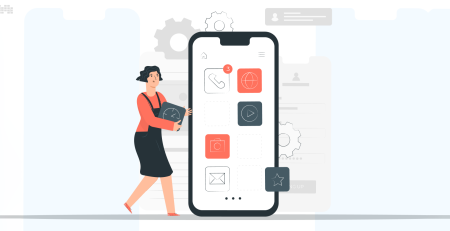



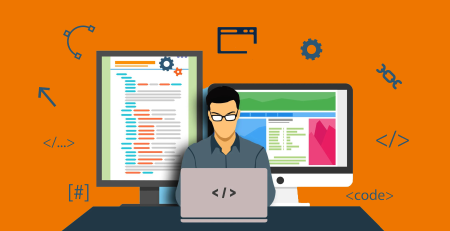
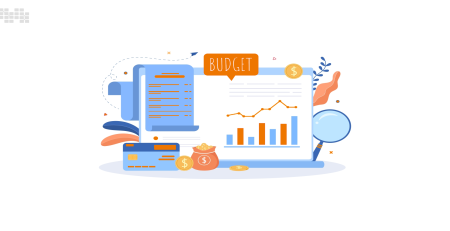
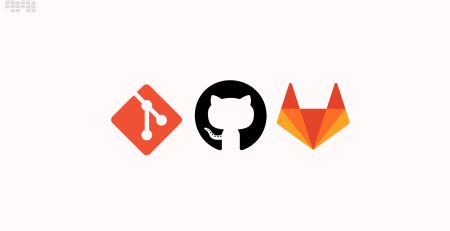
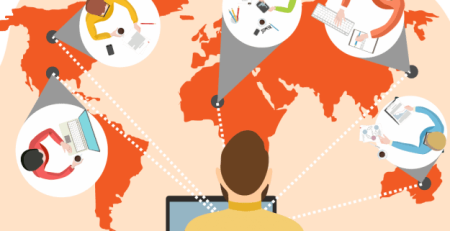

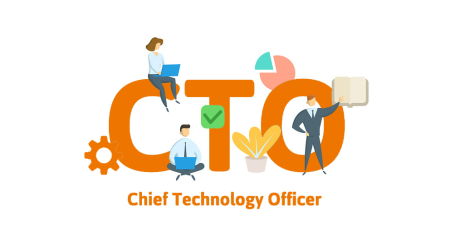
Leave a Reply